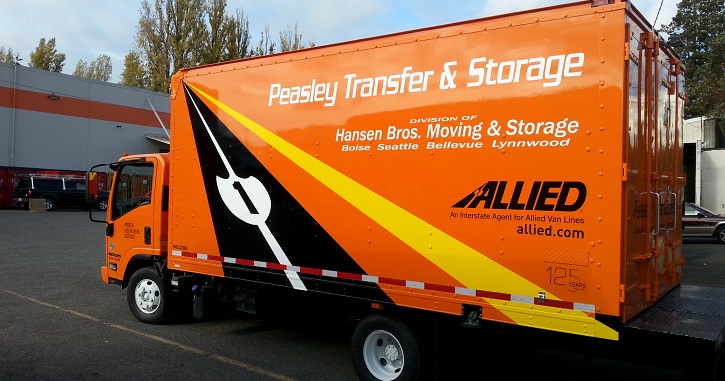How to Handle Heavy Lifting Without Injuring Yourself
Hiring a professional moving company is undoubtedly the most sensible solution when it comes to relocation or rearranging substantial items. However, there are situations where you might need to manage heavy lifting without injuring yourself, for example, due to the urgency of a project. In such cases, knowing how to safely handle heavy objects becomes essential. Therefore, expert movers Boise area recommends will provide you with practical and safe methods for lifting heavy items. The goal is to equip you with knowledge that prioritizes safety and efficiency, minimizing risks associated with repetitive motions, heavy lifting, and prolonged awkward postures – all recognized as occupational hazards in tasks involving physical labor.
Techniques Allowing Heavy Lifting Without Injuring Yourself
Lifting heavy objects without professional assistance demands strength and a strategic approach. It is vital to understand your body’s mechanics and use them to your advantage. The correct technique reduces the risk of injury and makes the task more manageable, even when heavy lifting equipment isn’t at hand.
- Keep a Wide Base of Support: Stability begins with your stance. Feet shoulder-width apart provides the balance needed to lift heavy items without losing your footing.
- Squat: Engaging your leg muscles, rather than relying on your back, helps prevent back strain and injuries.
- Maintain Good Posture: A straight back distributes the load evenly and prevents undue stress on any single part of the body.
- Lift Slowly: Gradual movements allow better control and reduce the risk of sudden strains.
- Keep the Load Close: Holding items close to your body leverages your center of gravity, easing the lift.
- Use Your Feet to Change Direction: This method avoids twisting your back, which can lead to injuries.
- Set Down the Load Properly: Using your legs to lower items protects your back from strain.
Understanding and applying these steps can significantly improve your heavy lifting tasks, whether you’re moving furniture at home or handling materials at work. These techniques are essential in ensuring that you undertake these activities safely, particularly when heavy lifting help is not readily available. Besides, lifting correctly is not simply about getting the job done. Your primary goal is to protect your body from potential harm and long-term injury.

Keep a Wide Base of Support
Establishing a wide base of support is the first critical step. Position your feet shoulder-width apart, one slightly in front of the other. This stance, often referred to as the ‘Karate Stance’, ensures balance and stability during the lift. It’s a fundamental technique used by movers Kuna ID, helping to distribute your weight evenly and reduce the risk of tipping or losing your balance while handling heavy items.
Squat Correctly
As you approach the item, start by positioning your feet shoulder-width apart for stability. Lower yourself by bending at the hips and knees, as if sitting back into an invisible chair, while keeping your back in a neutral position with a natural lumbar curve. It’s essential to keep your chest up and shoulders back to maintain this posture, ensuring your spine stays straight and the load is evenly distributed.
Remember to keep your heels firmly planted on the ground and your gaze forward to aid in balance. As you lift, the power generated by your legs will facilitate a smoother, safer ascent with the object securely in your grasp. This technique reduces undue pressure on your back, protecting you from strain and possible injury.
Maintain Good Posture
A good posture is not just for aesthetics; it’s vital for safety in heavy lifting. As you prepare to lift, keep your back straight, shoulders back, and chest out. This alignment ensures that the load is evenly distributed across your body, reducing the risk of back injuries. The correct form is to maintain a straight upper back with a slight arch in your lower back, much like the posture recommended by moving companies for their employees.
Lift Slowly and Carefully
It is crucial to lift the object slowly and with control. This deliberate pace helps you maintain balance and ensure you use your muscles correctly. The focus should be on smooth, steady movements. This calculated tempo allows you to maintain equilibrium and guarantees that the right muscle groups are engaged in the effort. Hastily attempting to lift can lead to a loss of control, abrupt strains, or a slip in grip, significantly increasing the risk of harm. Emphasis should be placed on fluid, consistent motion, ensuring the lift is executed with precision.
Keep the Load Close
A critical yet often overlooked aspect of lifting is maintaining the “Power Zone.” This is the area close to your body, between your mid-thigh and mid-chest height, where you can hold heavy items most effectively. Keeping loads within this zone allows for maximum control and minimum strain on your muscles and spine. When lifting or carrying heavy objects, ensure they remain in this optimal zone to leverage your body’s strength most efficiently and avoid unnecessary overextension or twisting movements that can lead to injury.

Use Your Feet to Change Direction
When carrying a heavy load, it’s important to change direction using your feet, not your body. Leading with your hips and taking small, careful steps helps prevent unnecessary twisting of your spine, which is a common cause of back injuries. The goal is to mimic the efficient and safe lifting techniques seen in professional environments, like Boise storage facilities, where heavy lifting is routine.
Set Down the Load Properly
The final step is just as crucial as the initial lift. Squat down with your knees and hips to lower the item, maintaining your good posture throughout. Rushing this part can be dangerous both to you and the object you’re carrying. Each of these steps is integral to lifting heavy objects safely and effectively. With practice, these techniques will become second nature, allowing you to confidently handle heavy lifting without injuring yourself in the process.
Common Mistakes in Heavy Lifting
Overcoming heavy lifting challenges without the proper know-how can lead to common errors that might result in injuries or strains. One such mistake is overestimating one’s strength and attempting to lift an object that exceeds safe weight limits. Even with heavy lifting equipment, the human element is critical, and misjudging this can lead to accidents. This is particularly relevant when considering heavy lifting while pregnant, when the risks are significantly higher, and the need for caution is paramount.
Another frequent error is ignoring the importance of proper lifting attire. Heavy lifting straps and a back brace for heavy lifting can provide necessary support and reduce the chance of injury. Skipping these can be tempting, especially when in a hurry or if the task seems manageable without them. However, this oversight can result in unnecessary strain on the body.
Lifting with a rounded back instead of squatting properly is a classic example of a lifting error. This improper form shifts the burden to the lower back, increasing the potential for muscle tears or spinal injuries. Additionally, twisting while lifting is another heavy lifting mistake to avoid. Rotating the torso while holding a weight can compromise the spine’s alignment and lead to significant injuries.

Additional Tips for Safe Lifting
A few key strategies can significantly increase safety when preparing for heavy lifting. Warming up with some light exercise and stretches can prepare your muscles and joints for the workload ahead. Much like athletes or skilled moving companies Nampa ID trusts, who understand the importance of a good warm-up, taking the time to prep your body can prevent muscle pulls and strains.
Wearing the correct attire is just as crucial. Supportive footwear provides a stable base for lifting, while gloves can improve grip and protect the hands. In some cases, using a back brace for heavy lifting can provide additional support to the spine, particularly useful when lifting awkwardly shaped or unwieldy objects.
Knowing one’s limits is essential. It’s better to seek heavy lifting help near me than to risk an injury. If an object seems too heavy or if you’re unsure about the proper technique, do not hesitate to contact a heavy lifting service. Experienced movers can tackle the task with the right equipment, ensuring the job is done safely. Adopting these tips ensures you handle heavy lifting without injuring yourself. Whether it’s a routine task at work or a one-time project at home, prioritizing your safety is always the right choice.
Recognizing the Weight of the Task: When to Seek Professional Help
There comes a moment when the scale of the task at hand changes from doable to overwhelming. Recognizing when to seek professional help can save more than just time; it can prevent potential injuries and property damage. For instance, moving large furniture pieces, such as pianos, calls for specialized piano movers Boise has who are equipped with the right tools and expertise.
Timing and Efficiency Considerations
Time is often a luxury one cannot afford during a move, particularly when balancing the demands of work or family. Professional movers are adept at executing swift relocations. Their expertise in packing, loading, and unloading streamlines the entire process. It is turning what could be a multi-day endeavor into a task that’s completed efficiently, freeing up your schedule for other essential tasks.

Health and Physical Limitations
Certain health conditions or physical limitations make DIY moving not just difficult but unsafe. Heavy lifting during pregnancy is generally advised against due to the increased risk of injury, strain, and complications. Furthermore, it can pose serious health risks for those who have existing back problems or are recovering from an injury. In such scenarios, it’s imperative to put health first and leave it to the professionals to handle heavy lifting without injuring yourself. They are trained to handle such tasks, reducing your risk of exacerbating any medical conditions.
Peace of Mind with Professional Handling
Engaging professional movers in Boise or any region isn’t just about the physical help. It’s about the assurance that comes from their experience in handling delicate items and navigating tricky spaces. Additionally, many moving companies offer insurance options to protect your belongings during the move. This coverage is crucial if you possess valuable or irreplaceable items, providing compensation in the rare event of damage.
When Professional Help is a Strategic Choice
Sometimes, the decision to hire professionals isn’t about inability but about making a strategic choice. If you’re managing a business relocation, the continuity of your operations is critical. Professional commercial equipment movers ensure that your business experiences the least amount of downtime, with equipment and files moved securely and set up quickly at the new location.
Ensuring a Safe Lift-off and Landing
In summary, lifting heavy objects is an art that combines strength with technique. It’s crucial to remember that while the principles of safe lifting are straightforward, the execution requires attention and practice. Ensuring that you wear proper attire, including heavy lifting straps or a back brace for heavy lifting, can provide crucial support for your body.
Safety has no alternative—protecting your well-being should always be your primary concern. From maintaining good posture to knowing when to seek professional help, each step is a building block towards heavy lifting without injuring yourself. If you find yourself weighing its risks, it’s time to brace for a better option. Don’t shoulder the burden alone; practice caution and consider enlisting heavy lifting help near you for tasks that exceed your capabilities. Remember, it’s not just about lifting; it’s about lifting right.

